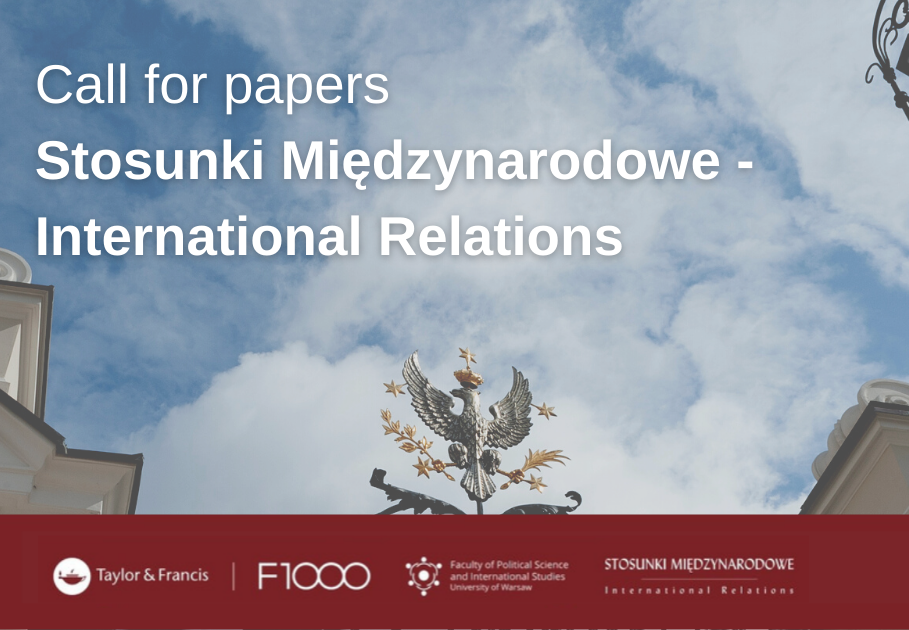O czasopiśmie
Cele i zakres czasopisma
Zasady Etyki
Polityka Prywatności (RODO)
Zespół Redakcyjny i Rada Redakcji
Kontakt
Bieżący numer
Archiwum
Dla Autorów
Call for Papers
Ogólne wytyczne dla Autorów
Struktura tekstów
Wymogi edytorskie
Procedura recenzowania
Zasady recenzowania
Dla Recenzentów
Procedura recenzowania
Zasady recenzowania
Ogólne wytyczne dla Recenzentów
Zasady publikowania/
Kodeks etyczny
Kontakt
ARTYKUŁ
Does the Charter of the United Nations Prohibit
the Use of Armed Force?
1
Université de Paris 2
Data publikacji: 31-03-2016
Stosunki Międzynarodowe – International Relations 2016;52(1):177-188
SŁOWA KLUCZOWE
STRESZCZENIE
This question is of key importance given that maintaining international peace and
security is what the Charter of the United Nations defines as the organisation’s
primary objective. The article constitutes an original interpretation of the prohibition
of the use of force included in the Charter of the United Nations. Article 55 in Chapter IX : International Economic and Social Co-operation speaks of peace in
the positive sense, that is not limited solely to the absence of conflicts but rooted
in peaceful and friendly cooperation between nations. Peace in the negative sense
means only the absence of armed conflicts. This concept of peace is predominant
in the UN Charter, having legal and institutional guarantees. The legal guarantee
is set out in Article 2 Section 4, which radically restricts the right of states to use
force in international relations. The role of the institutional guarantee is played
by the Security Council. Its task consists in preserving and restoring international
security and peace, and its competences are determined in Chapter VII. Article
51 of the same Chapter, in turn, which provides for a state’s inherent right of
individual or collective self-defence. Does the UN Charter prohibit war? The word
‘war’ as such is used in the Charter only once, in the Preamble, where war is
condemned. But violence has not disappeared from international relations since the
UN Charter’s entry into force. The author presents three ways to interpret Article 2
Section 4 of the UN Charter : integrist, nihilistic and pragmatic. The traditional,
integrist interpretation assumes a universal and absolute ban on the use of force
in international relations ; the nihilistic interpretation assumes realistic evaluation
of the situation, in practice granting numerous exceptions from the prohibition of
the use of force. The author himself advocates the pragmatic interpretation, where
the text of the norm is interpreted in the context of specific events that bring about
the use of force. The application of Article 2 Section 4 involves certain problems :
the ban concerns only states, while non-state actors increasingly often use force in
international relations as well. Other issues concern the interpretation of the threat
of using force, restrictions to the application of the prohibition of the use of force,
using force for implementing the principle of responsibility to protect and using
force upon consent of the Security Council. The author separately focuses on the
inherent right of individual or collective self-defence, provided for in Article 51 of
the Charter. The majority of experts in the field represent the view that self-defence
is an exception from the principle of using force only in the case of armed aggression
of one state against another. The article further highlights the division between
functional and structural self-defence. In the conclusion, the author points out the
need for the UN Charter to be more open, flexible and intelligent as regards the
prohibition of the use of force.
Udostępnij
Przetwarzamy dane osobowe zbierane podczas odwiedzania serwisu. Realizacja funkcji pozyskiwania informacji o użytkownikach i ich zachowaniu odbywa się poprzez dobrowolnie wprowadzone w formularzach informacje oraz zapisywanie w urządzeniach końcowych plików cookies (tzw. ciasteczka). Dane, w tym pliki cookies, wykorzystywane są w celu realizacji usług, zapewnienia wygodnego korzystania ze strony oraz w celu monitorowania ruchu zgodnie z Polityką prywatności. Dane są także zbierane i przetwarzane przez narzędzie Google Analytics (więcej).
Możesz zmienić ustawienia cookies w swojej przeglądarce. Ograniczenie stosowania plików cookies w konfiguracji przeglądarki może wpłynąć na niektóre funkcjonalności dostępne na stronie.
Możesz zmienić ustawienia cookies w swojej przeglądarce. Ograniczenie stosowania plików cookies w konfiguracji przeglądarki może wpłynąć na niektóre funkcjonalności dostępne na stronie.



